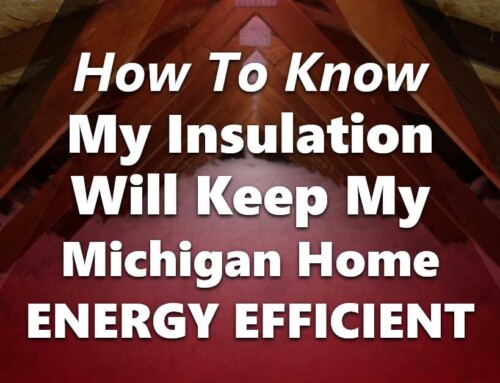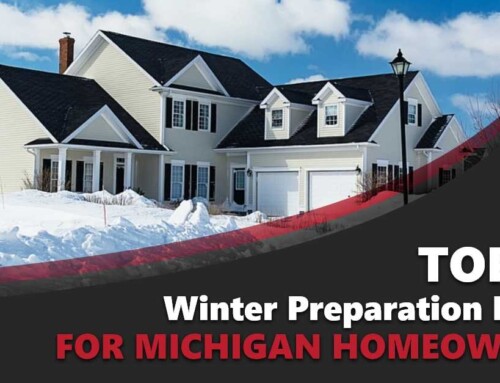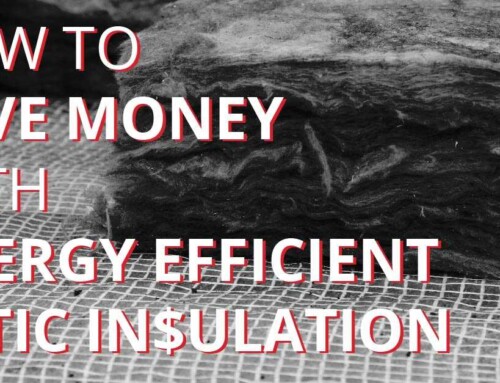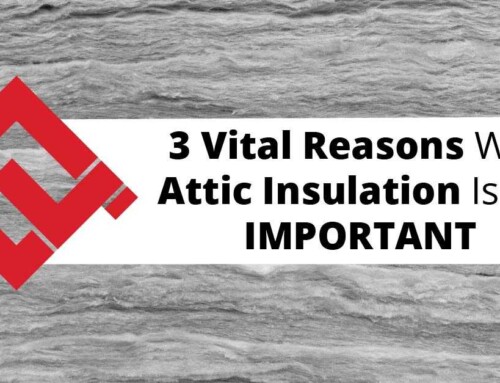One of the first things that come to mind when homeowners think of insulation is how it helps keep the house warm during the winter.
But insulation serves many other purposes than keeping the house cozy during Michigan’s winters. The impact and benefits are felt all year while maintaining a comfortable temperature inside your home. Proper insulation also benefits your roof year round. Let’s take a closer look.
Insulation in the Winter
The importance of insulation in the winter is well known. It keeps warm air in the home while preventing cold air from seeping into the rooms below. Without quality insulation, your furnace must work overtime to compensate for the excess cool air – and the extra strain can shorten your furnace’s lifespan while increasing your energy bill.
Insulation in the Summer
Summer is a favorite time of year for many folks, especially after a long winter and sometimes chilly Michigan spring. It’s also a time when your roof absorbs the more intense heat of the sun.
Your roof is the first thing to heat up when the temperatures rise in the summer. As an example, a 90-degree day can increase your roof’s temperature to 140-150 degrees. The excess heat seeps into your attic and, in turn, heats both sides of your roof and your home’s interior. A house with proper insulation and ventilation should only have a 10-20 degree variance between the outside and attic temperatures. Without the right amount of insulation and proper ventilation, the heat remains trapped in the attic.
Meanwhile, your home’s HVAC system blows cold air to compensate for the extra heat. Nearly half of cooled air leaks out through the attic unless you have good insulation – which means you’re paying more to cool your home. You’re also forcing your HVAC to cycle on and off more often resulting in a shortened your system’s lifespan. Higher energy efficiency and a more comfortable living environment overall are part of why it’s essential to have sufficient attic insulation.
Insulation and Your Roof
Both winter and summer extremes can take a toll on your home’s roof. In the winter, warm air escaping from your attic can cause harmful ice dams – which form when the snow melts on the upper area of your roof and causes water to trickle down to the cooler lower regions, where it freezes. In turn, ice dams can cause severe shingle deterioration and other serious damage which decrease’s your roof’s lifespan. Moreover, roof leaks can easily damage insulation.
Icicles are another sign your home doesn’t have enough attic insulation. They form when warm air from the attic causes snow on your roof to melt, and the melted snow then runs down the roof and into your gutters. When the water freezes again, icicles form and put excess strain on your gutters. Quality insulation keeps your home warmer while reducing snowmelt on your roof.
In the summer, your attic’s insulation should provide a layer of protection to prevent heat from entering the rooms of your home below. A lack of insulation when the temperatures start to sizzle causes excess wear and tear on your roof. The asphalt dries out in extreme temperatures causing shingles to crack, degrade, and granules to fall out. The bottom line is you’ll need to replace your roof sooner than you should, which is another unwelcome expense, simply due to a lack of proper insulation.
Whether it’s foam or fiberglass, insulation provides a barrier which limits the transfer of heat in and out of your home. In the winter, insulation helps keep the warmer air inside your house to keep you and your family cozy and comfortable. In summer, it keeps the cool air in and protects your shingles from degrading as quickly in the heat.
Insulation and the Environment
No matter the season, a properly-insulated home helps the environment. When your HVAC system works overtime to compensate for lack of insulation, it consumes energy and emits harmful pollutants into the environment. Energy consumption is reduced noticeably when the HVAC doesn’t have to work as hard, as are carbon dioxide emissions.
Also, using insulation which contains recycled materials prevents the depletion of natural resources. Fiberglass insulation, for instance, contains up to 60% recycled content, while mineral wool insulation also includes recycled material.
Don’t wait to act if you think your insulation needs replacing. Contact Victors Roofing of Canton and our team of trusted professionals.







